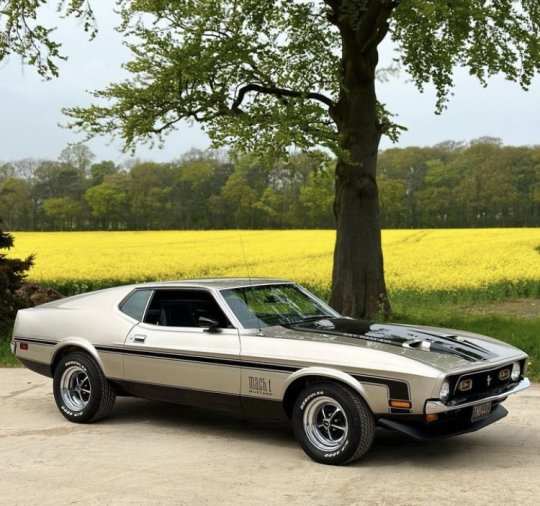#1971 Ford Mustang
Explore tagged Tumblr posts
Photo
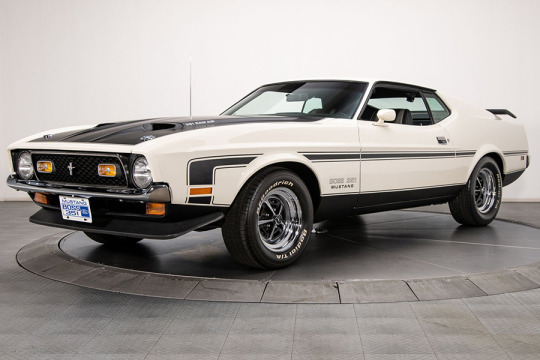
1971 Ford Mustang Boss 351 Fully Documented & Restored. => For Sale!
https://www.musclecardefinition.com/
#American cars#classic cars#muscle cars#1971 ford mustang#71 mustang#mustang fastback#boss mustang#boss 351#1971 boss mustang#ford 351
412 notes
·
View notes
Text

956 notes
·
View notes
Text
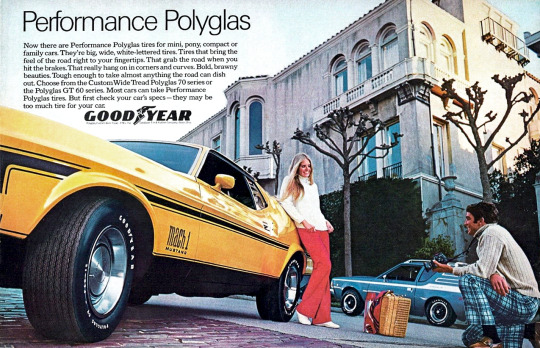
Performance Polyglas. Goodyear Tire & Rubber Company ad - 1971.
#vintage illustration#vintage advertising#tires#automotive products#goodyear tires#the 70s#the 1970s#goodyear#goodyear tire & rubber company#1971 gremlin#1971 amc gremlin#1971 mustang#1971 mustang mach 1#70s cars#classic cars#ford#american motors#ford motor company#mach 1 mustang
24 notes
·
View notes
Text

9 notes
·
View notes
Text


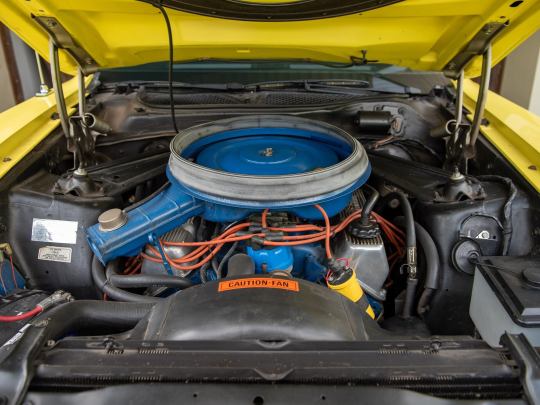
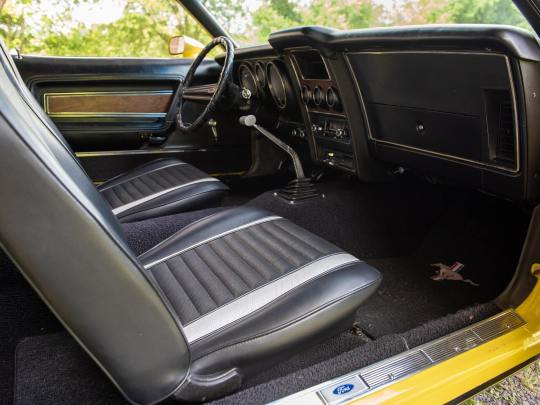
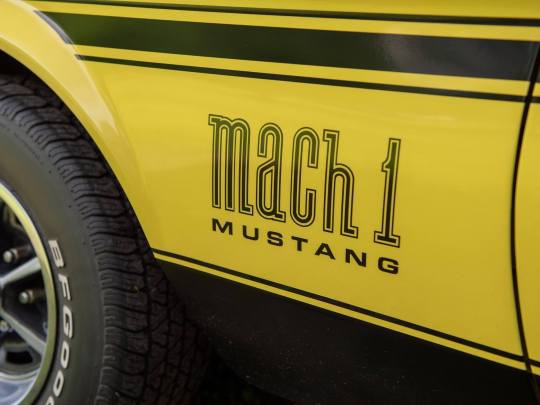

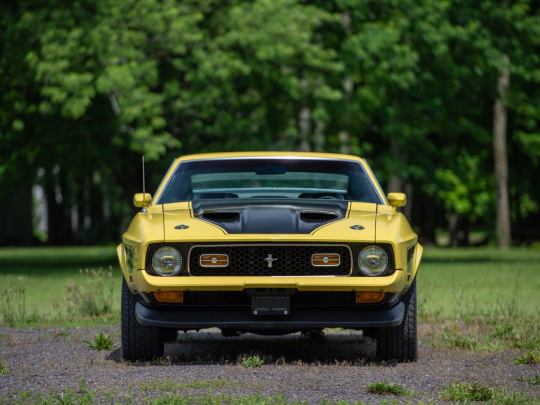
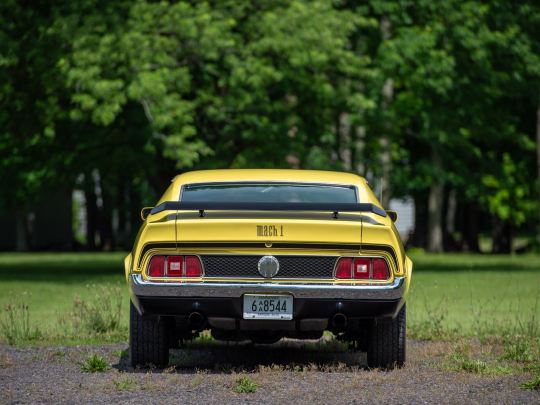

1971 Ford Mustang Mach 1 SportsRoof
#Ford#1971 Ford Mustang Mach 1 SportsRoof#automobile#car#muscle car#sports car#american sports car#luxury#luxury car#luxury living#luxury lifestyle#fast#fast and furious#yellow#sexy
25 notes
·
View notes
Text
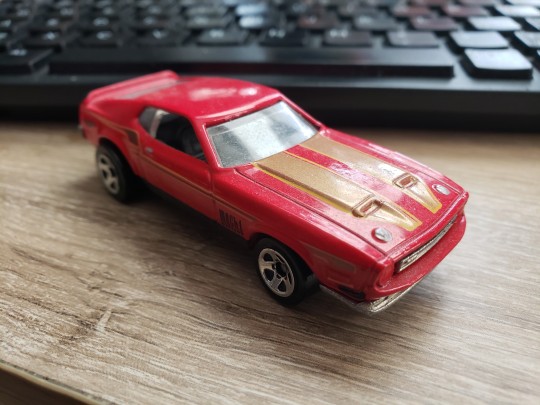
Die Cast Car of the day: 1971 Ford Mustang Mach 1 by Hot Wheels #toy #toys #cars #diecastcars #ford #mustang #fordmustang #1971fordmustangmach1 #hotwheels
8 notes
·
View notes
Text
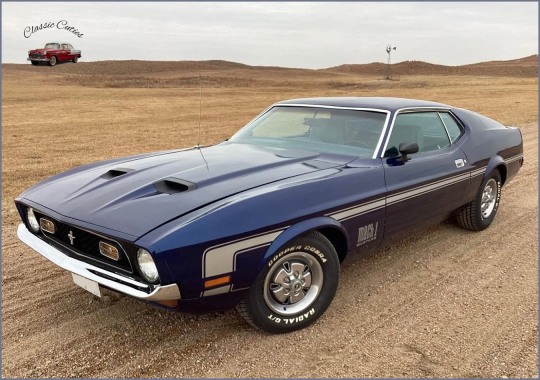
1971 Ford Mustang Mach 1

1971 Ford Mustang Mach 1

1971 Ford Mustang Mach 1
1971 Ford Mustang Mach 1 in Dark Blue Color
The 1971 Ford Mustang Mach 1 is a standout in the world of classic muscle cars, embodying the spirit of the early '70s with its bold design and powerful performance. As part of the first significant redesign of the Mustang since its inception, the 1971 Mach 1 features a more aggressive and aerodynamic look. It has a wider and longer body, giving it a commanding presence on the road.
Under the hood, the Mach 1 offered several engine options, catering to different levels of performance enthusiasts. The most powerful of these was the 429 Super Cobra Jet V8 engine, which delivered impressive horsepower and torque, making it a force to be reckoned with in terms of straight-line speed. The car's handling was also enhanced by its revised suspension and wider track, providing a more stable ride.
Inside, the Mach 1 featured a sporty interior with high-back bucket seats, unique trim options, and a distinctive dashboard layout that gave drivers a sense of control and connection with the car. The 1971 Mustang Mach 1 remains a classic symbol of American automotive culture, representing an era of style, power, and innovation that continues to capture the hearts of car enthusiasts worldwide.
753 notes
·
View notes
Text

Pictured: Suzy Dietrich, part of one of two all-female teams during the 1966 edition of the race
Always There, Women in Motorsport: Women at the 24 Hours of Daytona
Women's history in motorsport is rich, and that has always been the case. This year we will have seven women competing in the race, but back in 1966, when it was run as a 24 Hour race for the first time, we already had five women competing in the race.
The 24 Hours of Daytona was first run in 1966 but its history goes back to 1962 when it was first run as a 3 Hours race counting towards the FIA’s International Championship for GT Manufacturers (Later known as the World Sportscar Championship). 1963 would also see a 3H race. In 1964 and 65 a 2000 Km race would be held, which was about half the length of the 24H of Le Mans at that time. In 1966 the race turned into a 24 Hour race and has ran as such since with two exceptions*
*In 1972 the race was shortened to a 6 Hour race as the FIA feared the reliability of the 3.0 liter cars and in 1974 the race was not run due to the energy crisis.
In 1966 the 24 Hours of Le Mans had already run over 30 editions and with success for women at that. In 1930 Marguerite Mareuse and Odette Siko would become the first women to compete in the race, finishing 2nd in class and in 1932 Siko would even go on to win her class. The 1930s would prove to be successful for women as in 1935 a record of 10 women would compete at Le Mans. In 1957 women were prohibited from competing at Le Mans and this ban would only be lifted in 1971.
During the period of this ban, the first 24 Hours of Daytona would be run which saw two all female teams compete. Rosemary Smith and Sierra ‘Smokey’ Drolet finished 30th overall and sixth in their class in a Sunbeam Alpine. While Janet Guthrie, Donna Mae Mims and Suzy Dietrich finished 32nd overall and won their class in a Sunbeam Alpine.
Clipping from The Boston Globe · Sunday, February 13, 1966 Mentioning these performances

Sunbeam Alpine Driven by Donna Mae Mims, Janet Guthrie, and Suzy Dietrich at the Daytona 24 Hour Continental Race, February 1966 (Source: thehenryford.org)
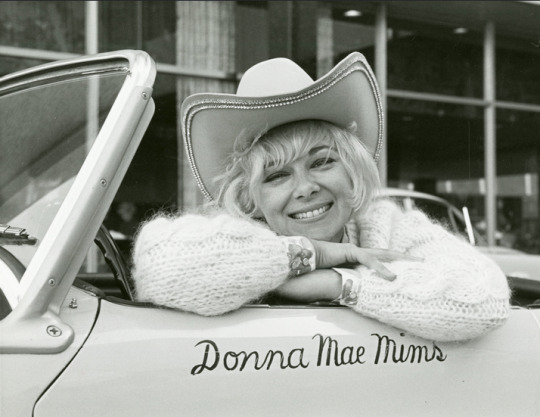
Donna Mae Mims, also known as the "Pink Lady" was the first woman to win a Sports Car Club of America national championship. Also one of the first women to compete in the 24H of Daytona (Source: Sports Car Club of America Archive)
Women would continue to compete at the race with another all-female team competing in 1967 consisting of Janet Guthrie, Sierra ‘Smokey’ Drolet and Anita Taylor driving a Ford Mustang. They finished fifth in class and 20th overall. Smokey would go on to win her class in 1969 driving a Corvette with John Tremblay, Vince Gimondo and John Belperche finishing sixteenth overall. That same year she would finish the 12 Hours of Sebring second in class together with Rosemary Smith. In 1970 Smokey would finish 25th overall while Donna Mae Mims competed but failed to finish
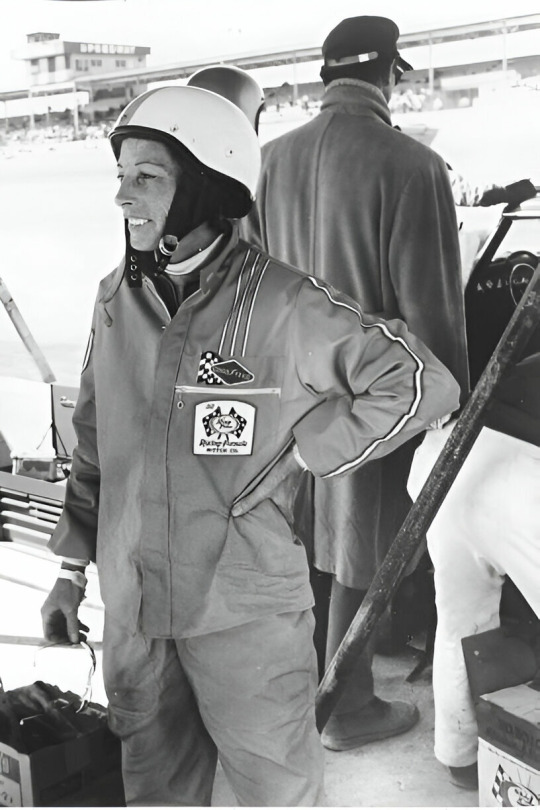
February 5, 1967: Sierra “Smokey” Drolet awaits her turn behind the wheel of the Ring Free-sponsored Ford Mustang she co-drove with Anita Taylor and Janet Guthrie during the 24 Hours of Daytona. (Photo by ISC Images & Archives via Getty Images)
In 1977 another female team took the start Christine Beckers and Lella Lombardi would share an Inaltéra GTP but unfortunately they did not make it to the finish. In 1980 Kathy Rude would drive in the 24 Hours of Daytona for the first time, finishing eight in the GTO Class together with her teammates. That same year Anne-Charlotte Verney would finish 9th overall and fifth in the GTX class while Lyn St. James finished 17th overall and Christine Beckers would finish 47th overall.
In 1981 Rude would finish seventh overall and third in the GTU class with her teammates Lee Mueller and Philippe Martin in a Mazda RX-7, Gaile Engle (36th overall) and Vicki Smith (56th overall) would also compete. The following year she would team up again with Lee Mueller, and she achieved a class win and sixth place overall with Allan Moffat as third driver. Vicki Smith also returned with a 25th place overall and Desiré Wilson would finish 45th overall.
In 1983 Rude would return to the race, now with an all-female team. Rude, Deborah Gregg, and Bonnie Henn would finish thirteenth overall and sixth in class in their Porsche 924. Smith and St. James also competed finishing 35th and 44th overall respectively. Kathy Rude would unfortunately suffer a huge crash at Brainerd that same year which left her in a coma for several weeks. She recovered but it meant she never got the chance to compete in IndyCar where she had arranged a seat for the 1984 season. The following years also saw women compete but without much success.
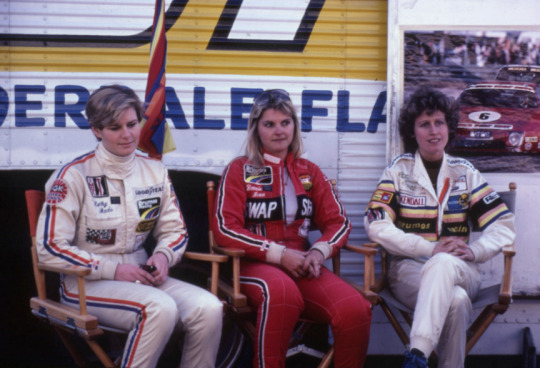
Kathy Rude, Bonnie Henn, Deborah Gregg Photo: Robert Fischer
In 1987 Lyn St. James finished 7th overall and first in the GTO Class, together with her teammates Tom Gloy, Bill Elliott, and Scott Pruett. Deborah Greg would finish 9th overall and 3rd in the GTO class while Linda Ludemann finished 16th overall.

Drivers Bill Elliott, Lyn St. James and Tom Gloy in victory lane following the SunBank 24 at Daytona International Speedway. (Photo by ISC Images & Archives via Getty Images)
Ludemann and James would continue to compete in the race in the coming years but it wasn’t until 1990 that there was success again. James would finish fifth overall and win the GTO class together with her teammates Robby Gordon and Calvin Fish in a Mercury Cougar. Ludemann would finish 17th overall.
Tomiko Yoshiwaka and Desiré Wilson would finish 47th overall in 1993. 1994 would see the return of an all-female team when Linda Pobst, Kat Teasdale, Margy Eatwell, Tami Rai Busby, and Leigh O’Brien finished 47th overall. That same year Lilian Bryner (15th overall), Kat Teasdale (17th overall) and Tammy Jo Kirk (34th overall) would also compete.
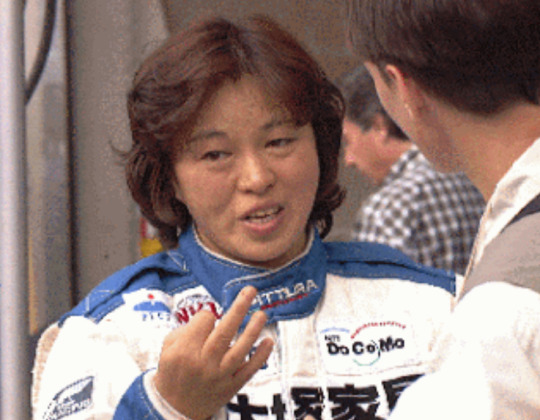
Tomiko Yoshikawa at Daytona in 1993
1995 saw another female class win when Lilian Bryer finished fifth overall with her teammates Enzo Calderari, Renato Mastropietro & Ulli Richter. They won the GTS-2 Class in their Porsche 911. The following year that same line-up would win their class again while they finished fourth overall. A little under 10 years later, in 2004, Lilian Bryner made history when she won the 24H of Spa overall.
In 1997 Claudia Hürtgen would finish 4th overall and first in the GTS-2 class with her teammates Ralf Kelleners, Patrice Goueslard, and André Ahrlé in their Porsche 911 GT2. This is the last female class win to date. Throughout the late 90s into the early 2000s women continued to compete in the race. The biggest success came for Milka Duno when she finished 2nd overall in 2007 with a Riley mK XI together with Dario Franchitti, Marino Franchitti, and Kevin McGarrity. This remains the highest overall finish of a female driver to date.
In 2019 an all-female entry returned when Simona de Silvestro, Katherine Legge, Bia Figueiredo, and Christina Nielsen finished 32nd overall and 12th in the GTD class in an Acura NSX GT3. The following year Tatiana Calderon, Rahel Frey, Legge and Nielsen competed in a Lamborghini Huracan but failed to finish.

Simona de Silvestro, Katherine Legge, Christina Nielsen, and Bia Figueiredo in 2019
From 2013 up until the race this year, at least a single woman has competed. With a record of entries coming in 2024 when nine women competed. This year 7 women will compete in the race with Karen Gaillard making her debut in the race.
#this was meant to be short#it passed 1k so not so short anymore#sorry for the half assed ending almost skipping over 2 decades but i feel like people know way more about recent stuff so post turn of#the century so i aimed at most of the things before that#rolex 24#imsa#24h of daytona#24h daytona#women in motorsport#*history series#i have an incredible headache so pls ignore any grammatical errors while reading
89 notes
·
View notes
Text
#muscle cars#american cars#classic cars#mopar#american muscle cars#ford#mustang fastback#1971#1971 ford mustang#mach 1
14 notes
·
View notes
Text


1971 Ford Mustang
8 notes
·
View notes
Text
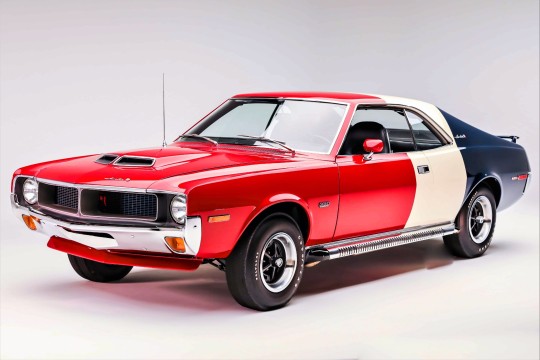
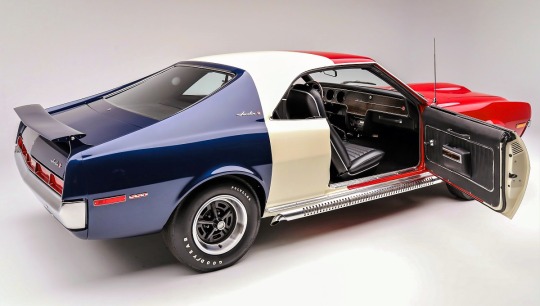
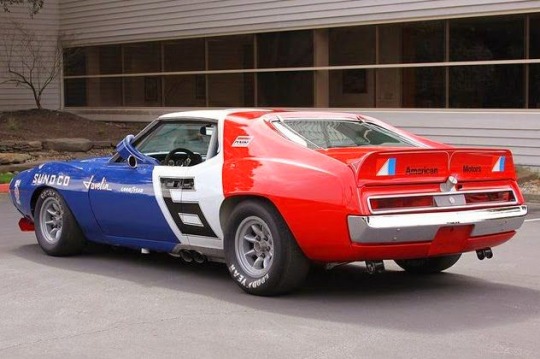
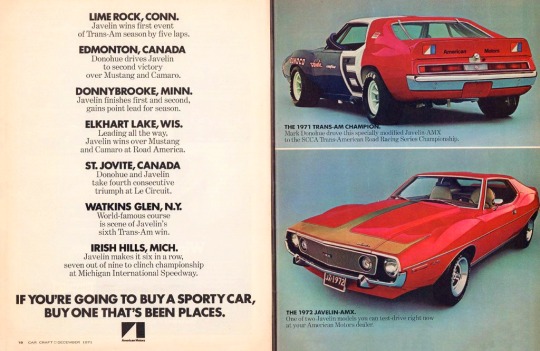
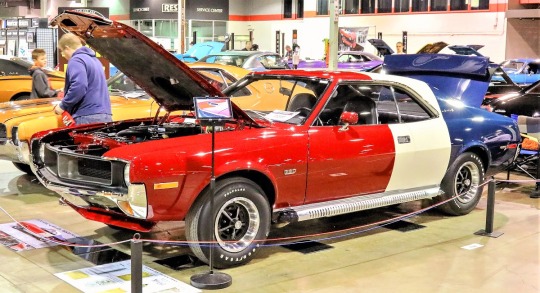
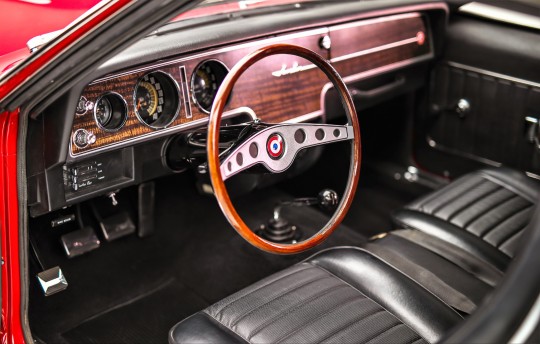
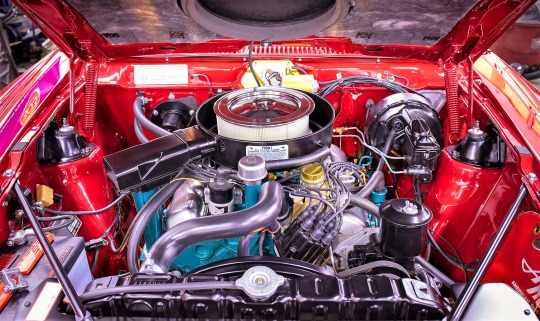

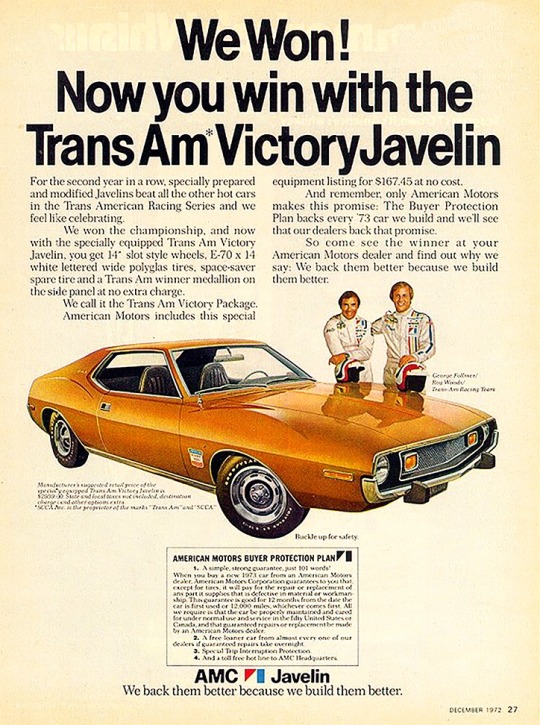
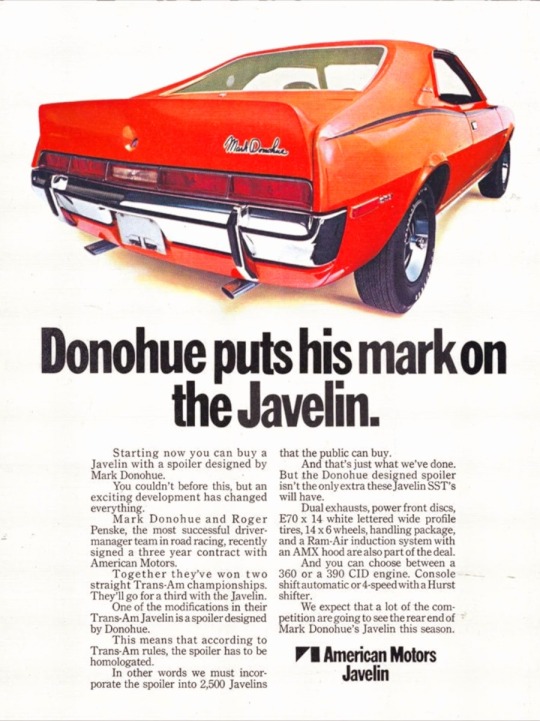
🇺🇲 Step back in time and experience the roar of the iconic AMC Javelin, a true legend of American muscle cars! Introduced in 1967 by American Motors Corporation (AMC), the Javelin was a front-engine, rear-wheel-drive, two-door hardtop automobile manufactured across two generations, spanning from 1968 through 1970 and then from 1971 through 1974 model years. It was designed to compete in the pony car market segment against rivals like the Ford Mustang and Chevrolet Camaro.
🚗💨 The AMC Javelin burst onto the scene in 1968, showcasing a sleek design and powerful engines. Styled by Dick Teague, the Javelin offered a range of trim and engine levels, from economical pony car variants to high-performance muscle car models. Its distinctive appearance, featuring a long hood and aggressive stance, turned heads on the streets and racetracks alike.
🏭 Besides being manufactured in Kenosha, Wisconsin, Javelins were also assembled under license in Germany, Mexico, the Philippines, Venezuela, and Australia, showcasing its global reach. American Motors even offered discounts to U.S. military personnel, leading to many Javelins being exported overseas.
🛞 Under the hood, the Javelin packed serious power. It was available with inline-six engines or potent V8s, delivering thrilling acceleration and speed. The AMX variant, equipped with a 6.4-liter V8, boasted over 300 horsepower!
🏆 The AMC Javelin wasn't just about looks—it excelled on the track too. It competed in Trans-Am racing, demonstrating its speed and agility. In fact, the second-generation AMX variant was the first pony car used as a standard vehicle for highway police car duties by an American law enforcement agency. Today, the Javelin's unique style and racing heritage make it a sought-after classic among collectors.
💔 By 1974, the automobile landscape had shifted. While other manufacturers downsized engines in response to changing market demands and fuel shortages, the Javelin's big engine option continued until production ceased in November 1974 amidst the Arab oil embargo and declining interest in high-performance vehicles.
🦅 The AMC Javelin embodies the spirit of American muscle cars, blending style, performance, and affordability. It's a timeless classic that continues to capture the hearts of car enthusiasts everywhere. Get ready to hit the road and experience the thrill of the AMC Javelin!
#brits and yanks on wheels#retro cars#transatlantic torque#vehicle#cars#old cars#brands#companies#automobile#american cars#amc#american motors#american muscle#amc javelin#javelin#muscle car#pony car#race car#trans am#old car#classic cars#car#american auto#automotive#chevrolet camaro#chrysler#wisconsin#kenosha#made in usa#ford mustang
305 notes
·
View notes






